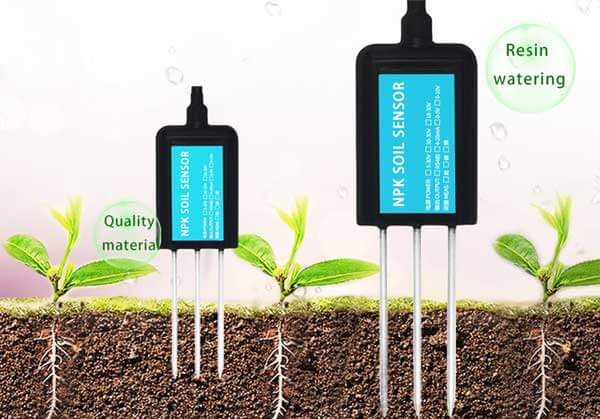Smart agriculture, also known as precision agriculture, is revolutionizing the farming industry by utilizing advanced technologies to optimize crop production. One crucial aspect of smart agriculture is the use of soil sensors, which provide real-time data on soil conditions, enabling farmers to make informed decisions and enhance crop growth. This article explores the significance of soil sensors in smart agriculture and highlights their role in boosting crop growth for sustainable farming practices.

The Importance of Soil Health in Crop Growth:
Healthy soil is vital for successful crop growth and achieving high yields. Soil composition, moisture levels, nutrient content, and pH balance all play a significant role in determining plant health and productivity. Monitoring these soil parameters is essential for optimizing crop growth and resource management.
Soil Sensors in Smart Agriculture:
2.1. Types of Soil Sensors: Soil sensors come in various types, including moisture sensors, nutrient sensors, temperature sensors, and pH sensors. Each sensor type measures a specific parameter critical for crop growth and provides valuable data for precision farming. 2.2. Real-time Data Collection: Soil sensors are designed to collect real-time data on soil conditions. They can be installed at different depths within the soil profile, allowing for monitoring of both surface and subsurface conditions. This real-time data empowers farmers to make timely adjustments and optimize irrigation, fertilization, and other agronomic practices. 2.3. Wireless Connectivity: Many soil sensors are equipped with wireless connectivity, enabling seamless data transmission to a central system or farm management software. This connectivity allows farmers to remotely access and analyze soil data, making it easier to monitor and manage large agricultural landscapes.
Benefits of Soil Sensors in Boosting Crop Growth:
3.1. Precision Irrigation Management: Soil sensors provide accurate and localized information about soil moisture levels, enabling farmers to optimize irrigation practices. By avoiding overwatering or underwatering, crops receive the right amount of water at the right time, minimizing water waste and reducing the risk of diseases associated with excess moisture or drought stress. 3.2. Nutrient Management: Soil sensors can measure nutrient levels in the soil, allowing farmers to apply fertilizers precisely where and when they are needed. This targeted approach improves nutrient uptake by plants, minimizes fertilizer runoff, and reduces environmental pollution. 3.3. pH Balance Monitoring: Soil sensors that measure soil pH help farmers monitor and adjust soil acidity or alkalinity. Maintaining the appropriate pH level is crucial for nutrient availability and uptake by plants. By optimizing pH balance, farmers can create ideal conditions for crop growth and maximize productivity. 3.4. Early Detection of Soil Problems: Soil sensors provide continuous monitoring, allowing farmers to detect potential soil problems early on. For example, sensors can identify areas with poor drainage, compacted soil, or high salinity levels. With this information, farmers can take corrective actions promptly, preventing crop damage and yield losses. 3.5. Data-driven Decision Making: By collecting and analyzing soil sensor data, farmers gain valuable insights into crop growth patterns, soil trends, and specific field conditions. This data-driven decision-making approach helps optimize resource allocation, crop rotation strategies, and overall farm management practices.
Integration with Other Smart Agriculture Technologies:
Soil sensors can be integrated with other smart agriculture technologies to create a comprehensive precision farming system. Integration with weather stations, satellite imagery, and crop management software enhances the effectiveness of soil sensor data, providing farmers with a holistic view of their fields and enabling precise and proactive decision making.

Challenges and Future Directions:
While soil sensors offer significant benefits for boosting crop growth and improving farming practices, there are challenges that need to be addressed. These include sensor accuracy and calibration, data interpretation, cost-effectiveness, and scalability for large-scale farming operations. Future developments should focus on standardizing data collection protocols, developing user-friendly interfaces and analytics tools, and reducing sensor costs to make them more accessible to farmers.
Conclusion:
Soil sensors play a critical role in smart agriculture by providing real-time data on soil conditions. By utilizing soil sensors, farmers can optimize irrigation, nutrient management, and pH balance, leading to enhanced crop growth and improved resource efficiency. The integration of soil sensors with other smart agriculture technologies enables farmers to make data-driven decisions, resulting in sustainable farming practices and higher yields. Continued research, technological advancements, and widespread adoption of soil sensors are essential for transforming the agricultural industry and ensuring food security in a rapidly changing world. Smart agriculture empowered by soil sensors holds great promise for a more productive, efficient, and sustainable future.
